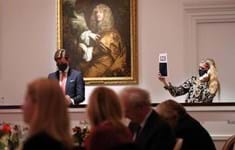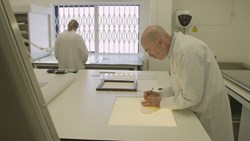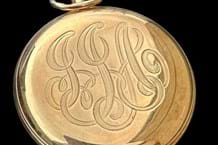
The documentary wheel-engraved goblet, dated 1697, is attributed to the enigmatic Odaccio glasshouse that operated in Dublin from c.1675.
There was plenty of interest both on the phones and the internet at Gorringe’s on December 8 before it sold to a European bidder at £9500 (plus 23% buyer’s premium) against a £1000-1500 estimate.
More complex story
Most earlier histories of glass give the credit for the development of lead crystal to George Ravenscroft at the Savoy glasshouse in 1674.
Today’s scholarship points to a more complex story that recognises in particular the contribution of Italian glassmakers working in London at the time. Many pieces of ‘Ravenscroft’ glass are now being re-catalogued as ‘Anglo-Venetian’.
The names of John Baptista Da Costa and John Odaccio Formica, two artisans from Altare who had worked together in Nijmegen in the Netherlands from c.1665-72 before crossing the North Sea, are thought to be important. It may be that Italian know-how provided the chemistry and artistry with Ravenscroft acting as financial backer and effective publicist.
Move to Dublin
The Italian connection soon spread to Dublin.
Odaccio was one of three people named in a glassmaking patent issued for Ireland in 1675 (the wording almost identical to Ravenscroft’s of the previous year) and he is thought to have operated in Dublin into the 1690s. Fragments of glass vessels from this period have been found during excavations in, or near, Dublin, including those at Rathfarnham Castle.
Hitherto, the earliest dated piece of Irish glass was a goblet worked with wheel-cut laurel branches and the roughly engraved inscription Lord Arch Bishop of Dublin 1715.
The 7in (17.5cm) high glass that surfaced at Gorringe’s is inscribed to the funnel bowl I Pray To God Bless Them All and dated 1697.
Similar to sherds found in both Ireland and in south-west England, it has a merese, an angular inverted baluster stem and a conical foot.
It proved the highlight of 50 lots consigned by Andrew Rudebeck, a local collector of close to 50 years, best known as a buyer of medieval stained glass (28 roundels formed part of an autumn exhibition at London dealer Sam Fogg).
Rudebeck had bought this piece only a decade or so ago in a regional auction where it was catalogued simply as ‘a French rosewood box containing a broken glass goblet ’. Communication with glass historian Colin Brain led to the suggestion it may be from the Odaccio Glassworks, while further research unearthed the possibility that the numerous initials on the piece (each ending in M) could reference the Martin family of engravers in Dublin.
Dan Bray at Gorringe’s made a further connection with a related wine glass engraved God Save the Queen from c.1690 sold by Bonhams as part of the Hubbard collection in 2011 for £20,000. Similar in both form and decoration, it had a provenance to the Hall estate in Barnstaple, the seat of the Chichester family who had strong Irish connections.
The foot of this newer discovery is broken and sections are lacking.
However, it has remained largely intact courtesy of a late 19th century owner who had a box fitted and lined with velvet to house the family heirloom.
Subsequently a museum-style perspex base has been made so that the goblet can be displayed standing up.















